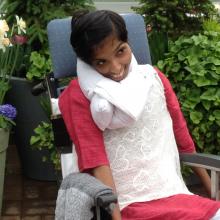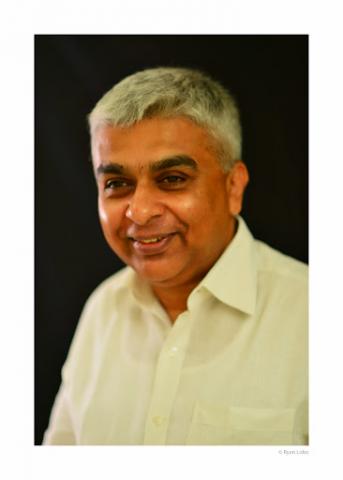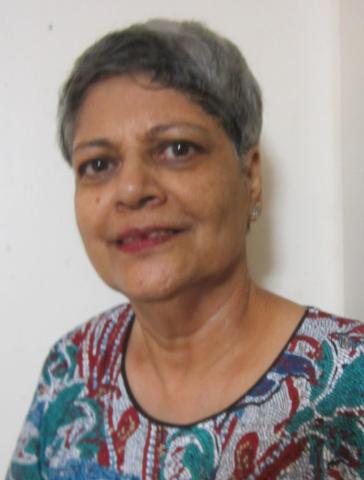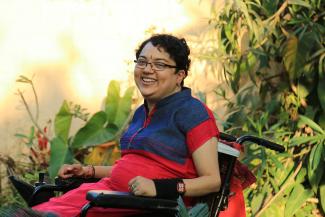
Mobility and accessibility aids can help people maintain independence in the activities that are most important to them. We spoke to a few people with different disabilities about the aids that empower them
Preethi Srinivasan, Founder Soulfree, quadriplegic due to a Spinal Cord Injury (pic above)
Perhaps the two important things I use that give me full freedom are my speech activated software (Dragon Naturally Speaking) that allows me to use the computer with complete independence.
The other is my motorised wheelchair, that allows me to travel as far as I like, without any body's help.
Vikas Mehta, Independent Consultant & Trekker, hearing loss due to Menniere's Disease;
"A tiny machine yet an enabler with the power to shape my life”. That’s what I would call my hearing aid. Once nestled inside my ears, everything around me is alive. The birds chirp.The schoolchildren nearby are at their shrieking best. The bed under me starts to groan. The fan has a distinct whirl. The spring in my daughter’s step is audible. I can almost hear the sizzle of the barbeque. The slurp of my lassi sounds delicious. My passion of teaching has come alive as I hear the affirmation of my students. My sigh of relief on getting my driving license renewed at the age of 50 is clearly not a figment of my imagination. The joy of listening to Julie Andrews in the Sound of music for the umpteenth time, makes me love life all over again. Conversations, debates, deals. Arguments, recrimations, snarls. Oh the joy of being a part of it all. And the bliss of shutting out the world at night before I go to sleep. My aid now rests alongside me in its little box. Earning a well deserved rest.
I can’t wait for the next day. Bring on the world. For my hearing aid makes me confident to face any challenge. Any minute. Any day.
Bhavna Botta, Founder ConnectSpecial, Cerebral Palsy
The aids that I cannot do wthout are:
My Wheel chair
My communication system (low tech eye pointing chart ,my switch -ADITi-movement sensor device my on screen scan mode software)
Infra red head device
My Ankle foot orthotics
George Abraham, CEO, Score Foundation, Visually impaired
I use screen reading software NVDA and JAWS.
Technology has been liberating, empowering and accelerating. It has broken down barriers, levelled playing fields and opened up opportunities. It has transported me from a World of dependence and compromises to a World of freedom and possibilities.
During my school and college days, I had to depend on family and friends to keep pace with studies, reading and other day to day action. Often I struggled to keep up with my classmates in class because I could not see the blackboard and read the textbooks. I rarely had the opportunity to read fiction or the newspapers. When I started my professional career in advertising, I always found myself tending to lag, simply because reading reports and other documents was a challenge.
The advent of screen reading technology, the laptops, the internet and the mobile phones has totally transformed the way I engage with life. The digital revolution has come as a boon for visually impaired persons like me. Books, newspapers and other platforms of knowledge and information is just a click away. Emails, Whatsapp, texting, Twitter and Facebook have opened multiple channels of communications. With the emergence of internet banking, e-wallets and the various mobile applications, the World of banking and commerce too has become accessible.
Today, I am a social entrepreneur leading an organization. Thanks to the screen reading technology, I am able to engage with the evolving digital World with ease and efficiency.
Nishant, intern at AMEYA, on the Autism Spectrum
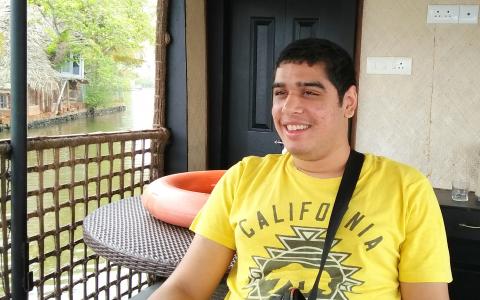
My favourite app for communicating is Avaz - because it has pictures.
He uses an App called Clicker Sentences IPAD to do his academic work and answer questions. He likes doing puzzles on Magic Puzzle App. He can do a 150 piece puzzle!
Jacqueline Colaco who has Rheumatoid Arthritis and uses mobility aids like wheelchairs, puts it succinctly: Modified infrastructure, aids and appliances will certainly encourage and enable more persons with disability to be independent and empowered to mainstream into public spaces. With this the apprehension, social stigma or reluctance to accept and end the divide would slowly disappear in our society!


